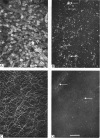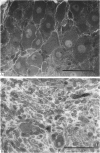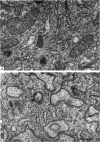Abstract
1. The structure of sympathetic neurones in the rat has been examined with histological, fluorescence histochemical and electron microscopical methods after chronic treatment for 6 weeks with guanethidine (25 or 30 mg/kg/day i.p.).
2. Less than 2% of the nerve cell bodies in the superior cervical ganglion remained at this time and in these cells the mitochondria were badly damaged. Few fluorescent adrenergic nerve fibres were found outside the central nervous system. This situation persisted even 4 months (the longest period studied) after cessation of treatment.
3. This procedure is proposed as a new method of producing sympathectomy. It has the advantage of being applicable to adult animals in a variety of experimental and pathological situations. It is uniquely advantageous for denervation of the male reproductive tract.
Full text
PDF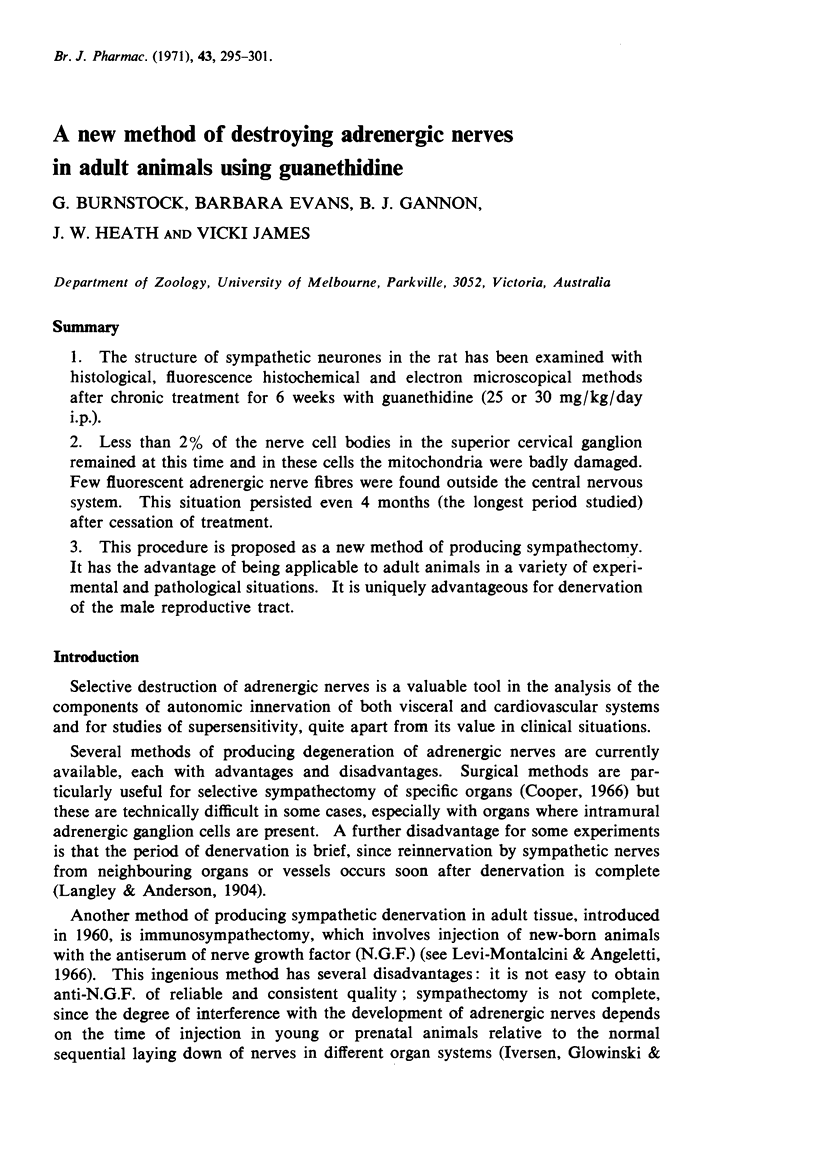
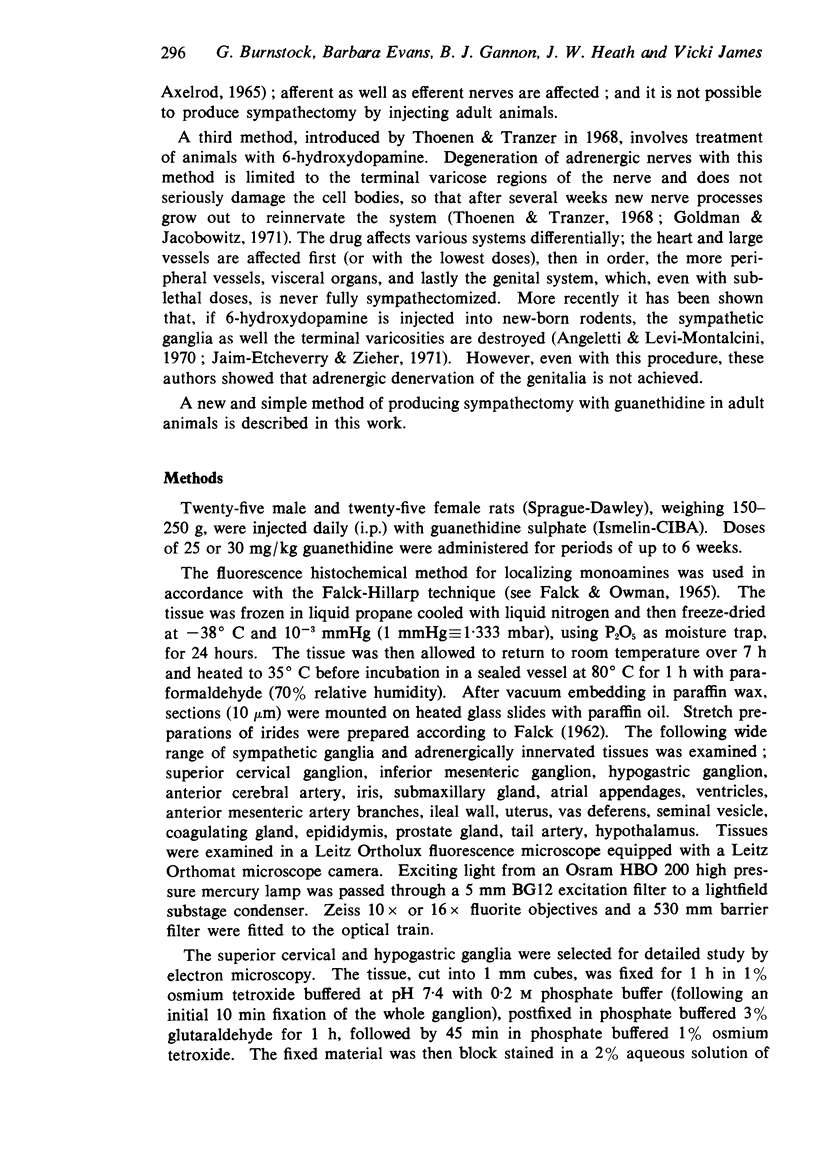
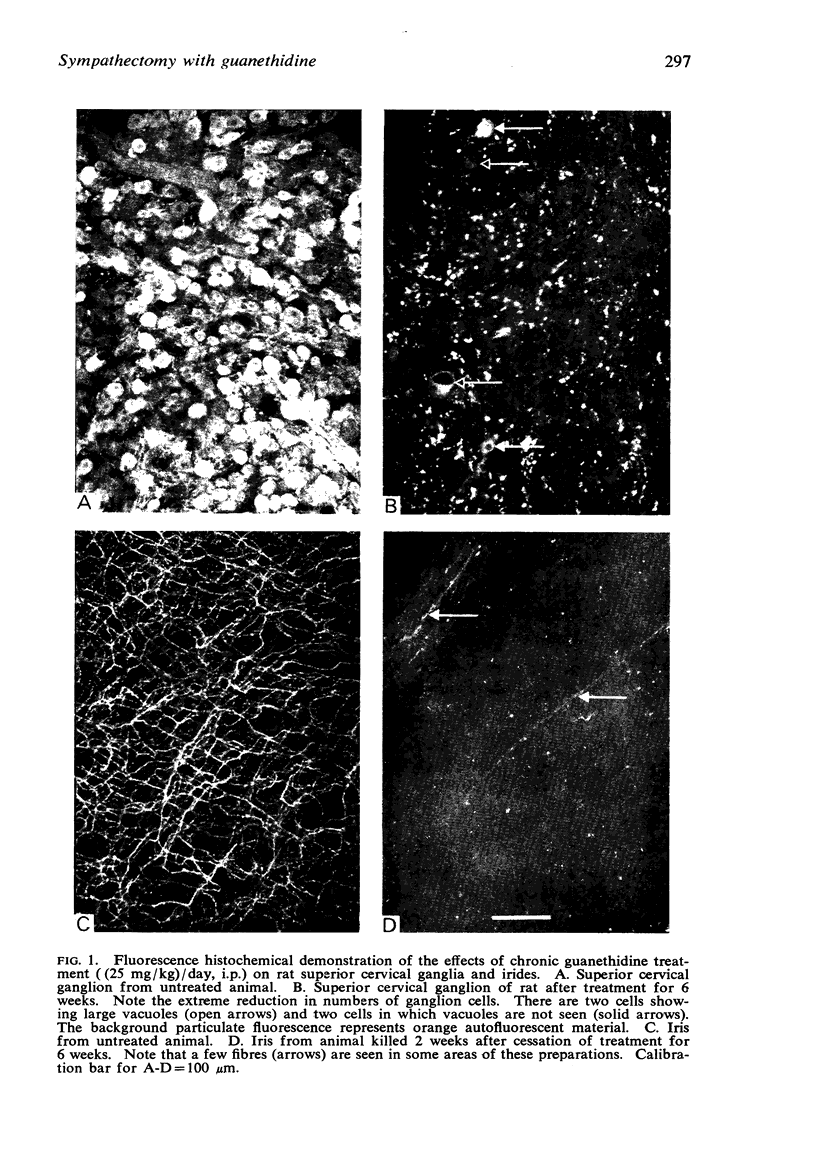
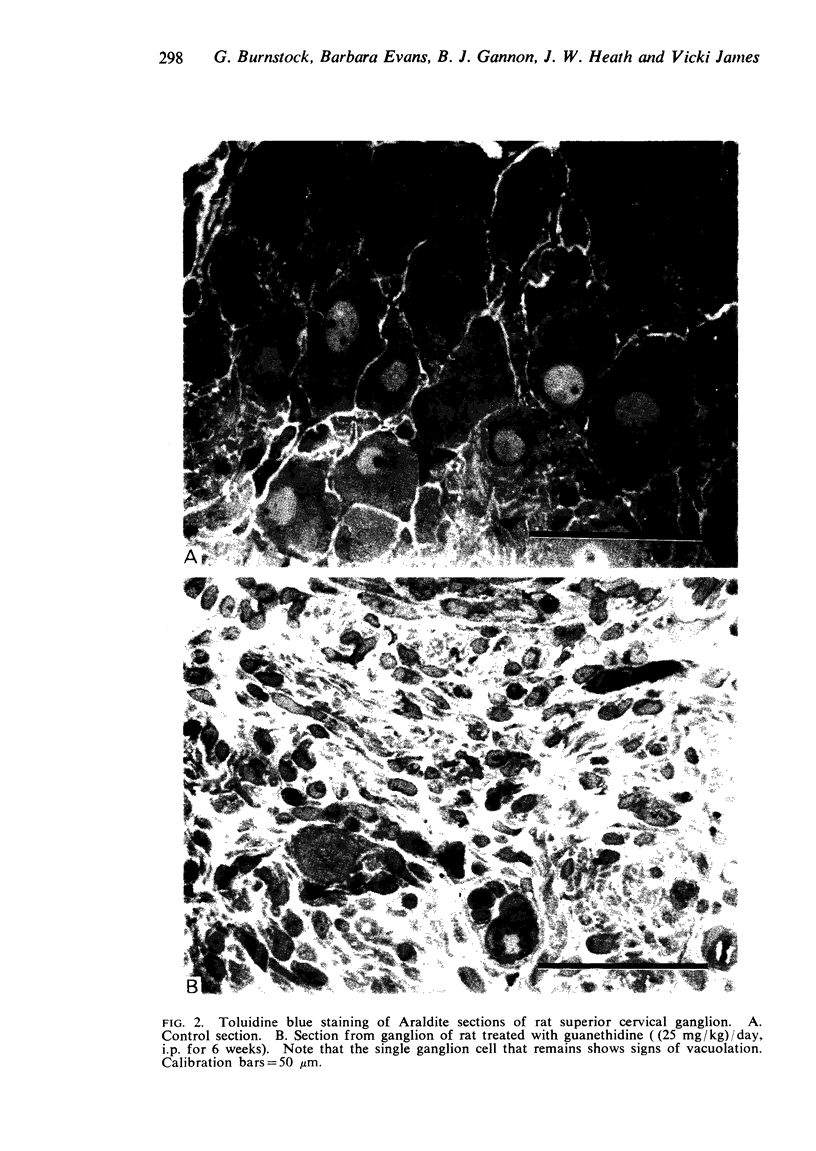
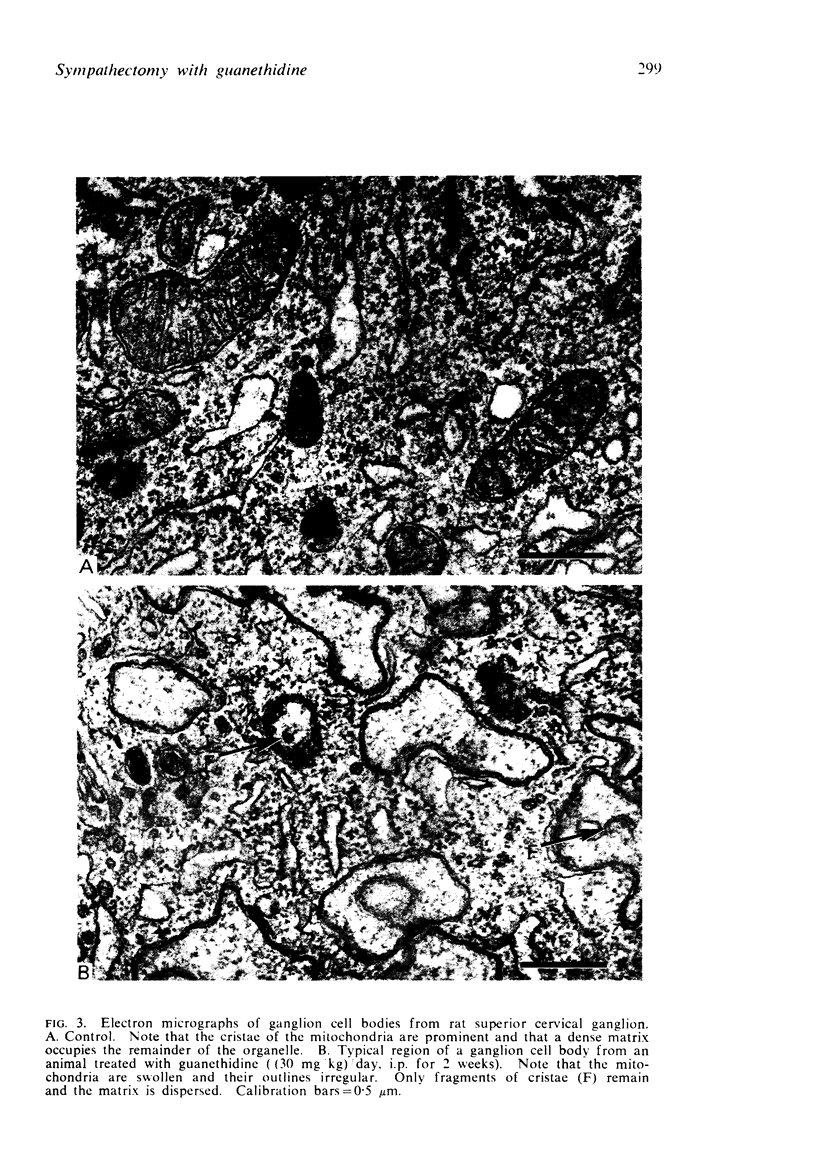
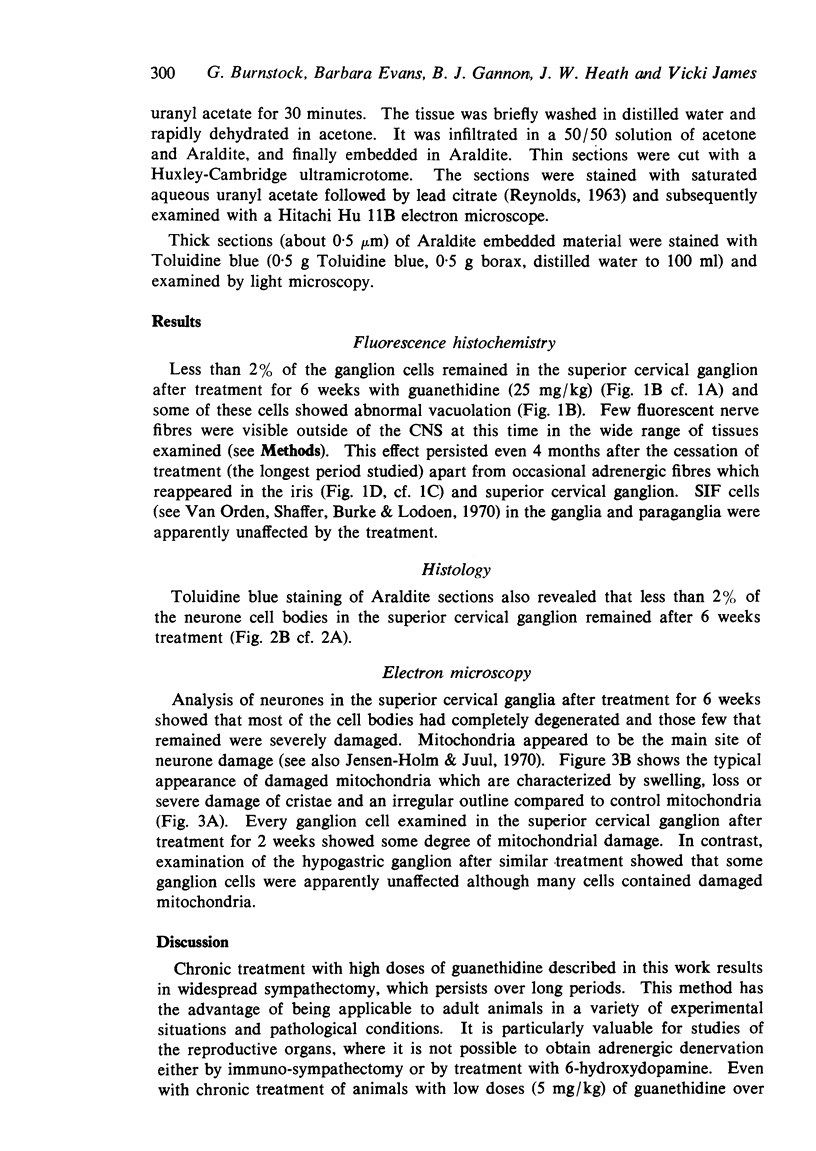
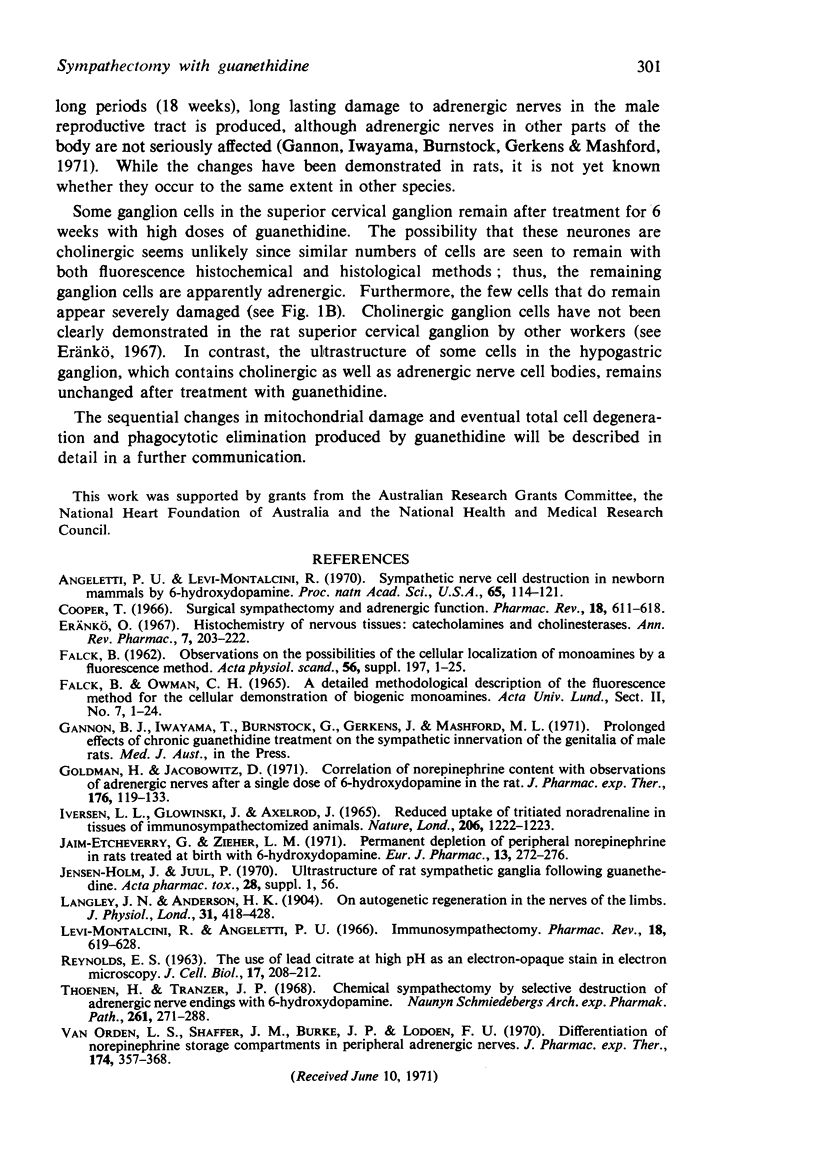
Images in this article
Selected References
These references are in PubMed. This may not be the complete list of references from this article.
- Iversen L. L., Glowinski J., Axelrod J. Reduced uptake of tritiated noradrenaline in tissues of immunosympathectomized animals. Nature. 1965 Jun 19;206(990):1222–1223. doi: 10.1038/2061222a0. [DOI] [PubMed] [Google Scholar]



